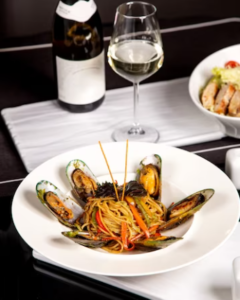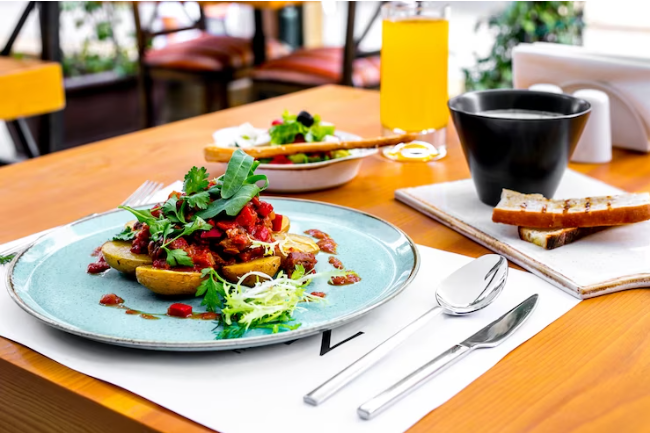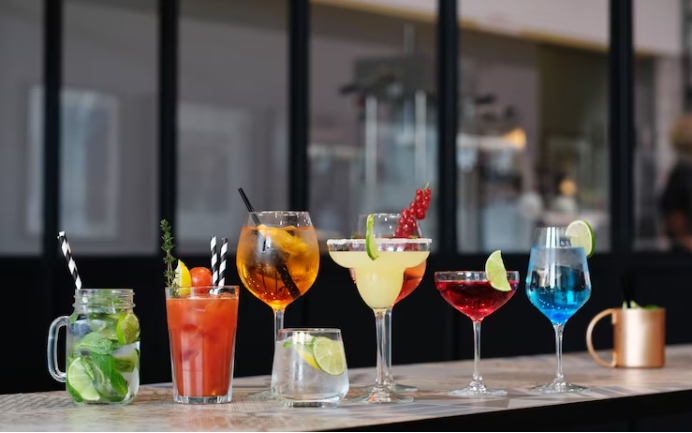Are you struggling to keep up with the changing tastes and expectations of your customers? Are you finding it difficult to come up with new and exciting dishes that stand out in a crowded marketplace? If so, you may need to focus on menu innovation to stay ahead of the curve.
In today’s competitive restaurant industry, customers are becoming increasingly discerning and demanding. They expect more than just good food and service; they want unique experiences that cater to their individual tastes and preferences.
To meet these expectations, you need to be constantly experimenting with new ingredients, techniques, and presentation styles. You also need to be aware of the latest trends and customer preferences and be willing to adapt your menu accordingly.
At the same time, you need to balance innovation with consistency and quality, ensuring that your customers always get the same high standard of food and service they have come to expect.
In this article, we will explore the importance of menu innovation and provide some practical tips and strategies for staying ahead of customer expectations.

Understanding the Importance of Menu Innovation
Understanding the significance of menu innovation is crucial in ensuring that restaurants remain ahead of customer expectations. Menu engineering is an important aspect of menu innovation, as it involves analyzing the profitability and popularity of various menu items. By identifying which items are the most profitable and which are the least, restaurant owners can make informed decisions about which items to feature more prominently on their menus.
This can also help with pricing strategies, as restaurants can adjust their prices based on the popularity and profitability of certain menu items. Pricing strategies are another key component of menu innovation. By understanding the value that customers place on certain menu items, restaurants can adjust their prices to reflect this.
This can help to increase sales and profitability, as well as improve customer satisfaction. Additionally, pricing strategies can help to differentiate a restaurant from its competitors, by offering unique and innovative menu items at competitive prices.
Overall, menu innovation and pricing strategies are essential for restaurants to remain competitive and meet the evolving expectations of their customers.
Identifying Customer Expectations and Trends
Keeping up with what customers are looking for and what’s currently trending can help restaurants create a menu that is both enjoyable and fresh. One way to do this is through menu personalization. Customers today are looking for menus that offer customizable options to suit their individual preferences. This can include everything from choosing different types of proteins, to selecting their preferred level of spiciness or heat.
By offering these options, restaurants can create a menu that caters to a wide variety of tastes and preferences. Another factor to consider when identifying customer expectations and trends is cultural influences. With the increasing diversity of populations in many areas, it’s important for restaurants to offer menu items that reflect the cultural influences of their customers.
This can include traditional dishes, as well as fusion cuisine that combines different cultural flavors and ingredients. By incorporating these elements into their menus, restaurants can create a unique dining experience that appeals to a broader customer base. Overall, by staying up-to-date on customer expectations and trends, restaurants can offer menus that are both innovative and satisfying.
Experimenting with New Ingredients and Techniques
Exploring new ingredients and techniques can add a fresh and exciting dimension to the culinary experience, providing customers with an opportunity to expand their palates and try something new.
Flavor pairing is one way to experiment with new ingredients to create unique and unexpected combinations that can elevate a dish to new heights. For example, pairing sweet and savory flavors, such as bacon and maple syrup, can create a delicious contrast that tantalizes the taste buds.
Texture exploration is another technique that can be used to add depth and complexity to a dish. Combining crispy and creamy textures, like a crunchy breadcrumb coating on a creamy risotto, can create a more interesting and satisfying eating experience.
However, it is important to balance experimentation with familiarity. While customers may be open to trying new ingredients and techniques, they still want to see familiar dishes on the menu. Incorporating new ingredients into classic dishes, such as adding truffle oil to mac and cheese, can provide a new twist that is still recognizable and appealing.
By experimenting with new flavors and textures while still maintaining a level of familiarity, restaurants can keep up with customer expectations and provide a unique and satisfying dining experience.
Designing Visually Appealing Menus
You’ll be drawn in by the mouth-watering visuals on our menu, making it hard to choose just one dish to try. That’s because we leverage the power of typography and color psychology in menu design to create a visually appealing experience that resonates with your appetite.
For instance, we use bold and playful fonts to showcase the names of our dishes, while using complementary colors to enhance the visual appeal of our menu items. This helps our menu to stand out and grab your attention, making it easier for you to navigate through our offerings.
In addition to this, we also use menu layout and organization techniques to make your dining experience seamless and enjoyable. Our menu is designed in a way that makes it easy for you to find what you’re looking for, whether it’s a specific dish or a particular type of cuisine.
We also group our dishes into categories based on their flavor profile, making it easier for you to make an informed decision on what to order. All of these design elements come together to create a menu that is not only visually stunning, but also user-friendly and easy to navigate.
So, the next time you visit our restaurant, be sure to take a closer look at our menu and see how our design choices enhance your dining experience.
Incorporating Sustainable and Ethical Practices Into Your Menu
If you want to make a difference in the world, consider incorporating sustainable and ethical practices into how you source and prepare your ingredients for your dishes.
Customers these days are looking for eco-friendly options and are more conscious about the impact their food choices have on the environment. By sourcing ingredients from local and organic farms, you not only contribute to a healthier planet but also support your community.
Ethical sourcing is another important aspect to consider when designing your menu. It means choosing suppliers who value fair labor practices and treat their workers with respect. By doing so, you ensure that the people involved in producing your ingredients are paid fairly and work in safe conditions.
This not only benefits the workers, but also reflects positively on your brand and can attract socially conscious customers who appreciate your commitment to ethical practices.
Incorporating sustainable and ethical practices into your menu not only benefits the environment and the people involved in producing your ingredients, but also adds value to your brand and attracts customers who share your values.
Are you looking to take your restaurant’s beverage program to the next level? Click here
Frequently Asked Questions
How do you measure the success of menu innovation?
To measure the success of menu innovation, you need to listen to your customers’ feedback and analyze sales data. This will help you understand what dishes are popular and what changes need to be made to keep your menu fresh and exciting.
What are some common mistakes to avoid when experimenting with new ingredients and techniques?
When experimenting with new ingredients, avoid using too many or unfamiliar ones that may overwhelm the dish. Also, make sure to properly test and adjust cooking techniques to ensure consistency and quality.
How can you effectively balance sustainability and profitability in your menu offerings?
To balance profitability vs sustainability, consider ingredient sourcing. Choose locally sourced, seasonal ingredients to reduce transportation costs. Offer plant-based options and minimize food waste to satisfy customers’ ethical concerns and reduce costs.
What are some innovative ways to incorporate technology into menu design?
Incorporating interactive menus and personalized recommendations are innovative ways to modernize your menu design. This allows customers to customize their orders and enhances their experience, ultimately leading to increased customer satisfaction and repeat business.
How do you handle customer feedback and incorporate it into future menu innovations?
To improve customer satisfaction, listen to feedback and consider menu customization. Ask for input through surveys or social media and make changes based on trends. Personalized options can keep customers coming back for more.
Conclusion
Congratulations! You now have a better understanding of how to stay ahead of customer expectations by innovating your restaurant menu. By identifying customer trends and experimenting with new ingredients and techniques, you can offer unique and exciting dishes that keep your customers coming back for more.
Don’t forget the importance of designing visually appealing menus and incorporating sustainable and ethical practices into your offerings. With these tips, you can create a menu that not only satisfies your customers’ cravings but also reflects your values as a business.
Remember, menu innovation is an ongoing process, so don’t be afraid to continue trying new things and adapting to changing customer preferences. Good luck!



